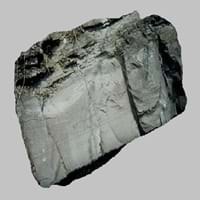Definition
A sedimentary rock, deposit of a submarine turbidity currents and are composed of layered particles
Chalk is a soft, white, powdery limestone consisting mainly of fossil shells of foraminifers
Origin
European Foreland Basins
Unknown
Discoverer
Arnold H. Bouma
Unknown
Etymology
From Medieval Latin turbiditas, from Latin turbidus (turbid). Turbidity current is from 1939
From old English cealc chalk, lime, plaster; pebble, from Greek khalix small pebble, in English transferred to the opaque, white, soft limestone
Class
Sedimentary Rocks
Sedimentary Rocks
Sub-Class
Durable Rock, Soft Rock
Durable Rock, Soft Rock
Group
Not Applicable
Not Applicable
Other Categories
Coarse Grained Rock, Fine Grained Rock, Opaque Rock
Fine Grained Rock, Opaque Rock
Texture
Mud-rich, Sandy
Clastic or Non-Clastic
Color
Black, Brown, Colourless, Green, Grey, Pink
Grey, White, Yellow
Durability
Durable
Durable
Appearance
Dull and Banded
Soft
Interior Uses
Bathrooms, Countertops, Decorative Aggregates, Flooring, Homes, Interior Decoration
Decorative Aggregates, Homes, Interior Decoration
Exterior Uses
As Building Stone, As Facing Stone, Paving Stone, Garden Decoration
As Building Stone, As Facing Stone, Paving Stone, Garden Decoration
Other Architectural Uses
Curbing
Powder
Construction Industry
As Dimension Stone, Cement Manufacture, Construction Aggregate, for Road Aggregate, Making natural cement
As Dimension Stone, Cement Manufacture, Construction Aggregate, for Road Aggregate, Making natural cement, raw material for manufacture of quicklime and slaked lime, Source of calcium
Medical Industry
Not Yet Used
Not Yet Used
Antiquity Uses
Artifacts, Monuments, Sculpture
Artifacts, Monuments, Sculpture, Small Figurines
Commercial Uses
Cemetery Markers, Creating Artwork
Alumina Refineries, Creating Artwork, Drawing on blackboards, Gymnasts, athletes and mountain climbers use for grip, In aquifers, Paper Industry, Production of Lime, Raw material for manufacture of quicklime, slaked lime, Soil Conditioner, Whiting, Whiting material in toothpaste, paint and paper
Types
Not Available
Not Available
Features
High silica content, Host Rock for Lead
Clasts are smooth to touch, Is one of the oldest rock, Smooth to touch, Very fine grained rock
Archaeological Significance
Famous Monuments
Data Not Available
Data Not Available
Famous Sculptures
Data Not Available
Data Not Available
Formation
Turbidite is a type of sedimentary rock formed when a river carries or transports pieces of broken rock as it flows. These particles then settle down and are subjected to high temperature and pressures hence forming Turbidite.
Chalk is formed from lime mud, which accumulates on the sea floor which is then transformed into rock by geological processes.
Mineral Content
Coesite, Quartz, Sand
Calcite, Clay, Clay Minerals, Quartz, Sand
Compound Content
CaO, Carbon Dioxide, MgO
Ca, NaCl, CaO
Types of Metamorphism
Not Applicable
Not Applicable
Types of Weathering
Biological Weathering, Chemical Weathering, Mechanical Weathering
Biological Weathering, Chemical Weathering
Types of Erosion
Chemical Erosion, Coastal Erosion, Sea Erosion, Water Erosion, Wind Erosion
Chemical Erosion, Coastal Erosion, Water Erosion
Grain Size
Fine to Coarse Grained
Very fine-grained
Fracture
Splintery
Not Available
Streak
White, Greenish White or Grey
White
Porosity
Very Less Porous
Highly Porous
Compressive Strength
Not Available
Cleavage
Disjunctive
Non-Existent
Specific Gravity
2.46-2.73
2.3-2.4
Transparency
Opaque
Opaque
Density
1.6-2.5 g/cm3
2.49-2.50 g/cm3
Resistance
Heat Resistant
Heat Resistant
Deposits in Eastern Continents
Asia
Not Yet Found
Brunei, India, Indonesia, Malaysia, Singapore, Thailand, Vietnam
Africa
Western Africa
Cameroon, Chad, Ghana, Kenya, Malawi, Sudan, Tanzania, Togo, Zambia, Zimbabwe
Europe
Austria, Belarus, Romania, Switzerland, United Kingdom
England, France, Germany, Spain, United Kingdom
Others
Not Yet Found
Not Yet Found
Deposits in Western Continents
North America
Canada, USA
Canada, USA
South America
Brazil, Colombia
Colombia
Deposits in Oceania Continent
Australia
New Zealand, Western Australia
Adelaide, New Zealand, Queensland, Tonga, Victoria, Yorke Peninsula
All about Turbidite and Chalk Properties
Know all about Turbidite and Chalk properties here. All properties of rocks are important as they define the type of rock and its application. Turbidite and Chalk belong to Sedimentary Rocks.Texture of Turbidite is Mud-rich, Sandy whereas that of Chalk is Clastic or Non-Clastic. Turbidite appears Dull and Banded and Chalk appears Soft. The luster of Turbidite is metallic while that of Chalk is dull. Turbidite is available in black, brown, colourless, green, grey, pink colors whereas Chalk is available in grey, white, yellow colors. The commercial uses of Turbidite are cemetery markers, creating artwork and that of Chalk are alumina refineries, creating artwork, drawing on blackboards, gymnasts, athletes and mountain climbers use for grip, in aquifers, paper industry, production of lime, raw material for manufacture of quicklime, slaked lime, soil conditioner, whiting, whiting material in toothpaste, paint and paper.










